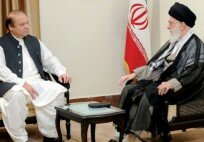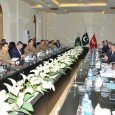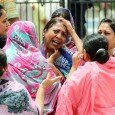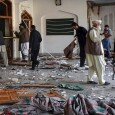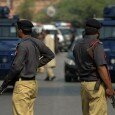By Muhammad Amir Rana –
Aftermath of operation in North Waziristan
There is no doubt the State would have to choose the hard approach as talks with the Taliban have not brought desired results.
It seems the government still wants to give another chance to talks, to build maximum consensus in favour of a military operation against terrorists based in the tribal areas. The military leadership is ready to take up the task, whereas, the political leadership needs more time for various reasons…one of which is the formulation of a plan for the would-be internally displaced people (IDPs).
At the same time retaliatory attacks by the Taliban in urban centres are also a major concern. Apart from the operational strategies, they have to look at the post-operation scenario as well. At the operational level, a clear approach based on the distinction between the challenges of a tribal insurgency and the pervasive terrorism in the country is essential.
Understanding the nature of the challenge in each context is always important. In this backdrop, the structural complexities of the militant groups should also be taken into consideration to evolve better counter-strategies. Many assessments indicate that the Al-Qaeda, Tehreek-i-Taliban Pakistan (TTP) and other militant groups in Pakistan have a nexus, but their operational strategies are different. Countermeasures at the security, political and ideological levels need to factor in those differences and respond accordingly.
A review of the behaviour of militants would suggest that well-structured groups based in urban areas behave differently to those in the tribal areas. Urban-based groups avoid engaging in local conflicts and mainly focus on external fronts. One reason is their ideological entrenchment and support base in society. At the same time, these groups fear physical losses in case they get involved in local conflicts. However, this approach does not help them avoid internal differences.
In case of an operation in North Waziristan, the smaller groups like the Punjabi Taliban and sectarian militant groups have nothing to lose as they have very fluid organizational structures with fewer human resources and less logistical dependence on major groups like Al Qaeda and the TTP. They continue fuelling the conflict with the help of allies in tribal territories. This is not unique to Pakistan; it can also be observed in Iraq, Yemen and Somalia.
Will security establishment consider this diversity of militant groups in its counter strategies? Can it isolate small terrorist cells from major groups before initiating peace moves? Or can these small groups be engaged in the peace process and peace deals made with them? The probability is not bright. It is not because of their fluid structure but the nature of their nexuses with Al Qaeda and the TTP.
The TTP gives more importance to its relations with Al Qaeda because of its operational, tactical and logistical linkages with foreign groups. Small terrorist groups have identical strong bonds with Al Qaeda, which indicates that Al Qaeda remains in the driving seat. This nexus can launch terrorist attacks in urban areas.
These attacks cannot be stopped except by better coordination among law enforcement departments and intelligence agencies. The key objective of coordination must be to evolve a monitoring and evaluation mechanism to keep a check on the performance of various institutions and departments. It will be helpful in reviewing and amending strategies in the context of the changing nature of threats.
One critical challenge in the aftermath of military operation will be the militants’ rehabilitation. Does the state have any plan of reintegration of militants?
After the successful military intervention in Swat, the state launched a rehabilitation programme in 2010. The rehabilitation centres have released more than 2,000 former militants, but thousands are waiting to be rehabilitated. Across the world, rehabilitation programmes are expensive and slow to produce results. Experts propose broader political approaches for reintegrating militants in society.
In mainland Pakistan, however, terrorism has its roots in ideological, political and sectarian narratives developed by the religious parties, militant groups and, at times, by the State itself. The disparate nature of threats calls for an equally diverse approach to counter them. Comprehension of the ideological and tactical evolution of militant groups in Pakistan must be the first step towards evolving a comprehensive policy on militancy.
Finally, the demonstration of the State’s will to show that it is committed to eradicate the menace of terrorism is essential, not only to win the confidence of the public but to ensure the effectiveness of its policies as well.
The writer is the Director Pakistan Institute for Peace Studies (PIPS), based in Islamabad





























































